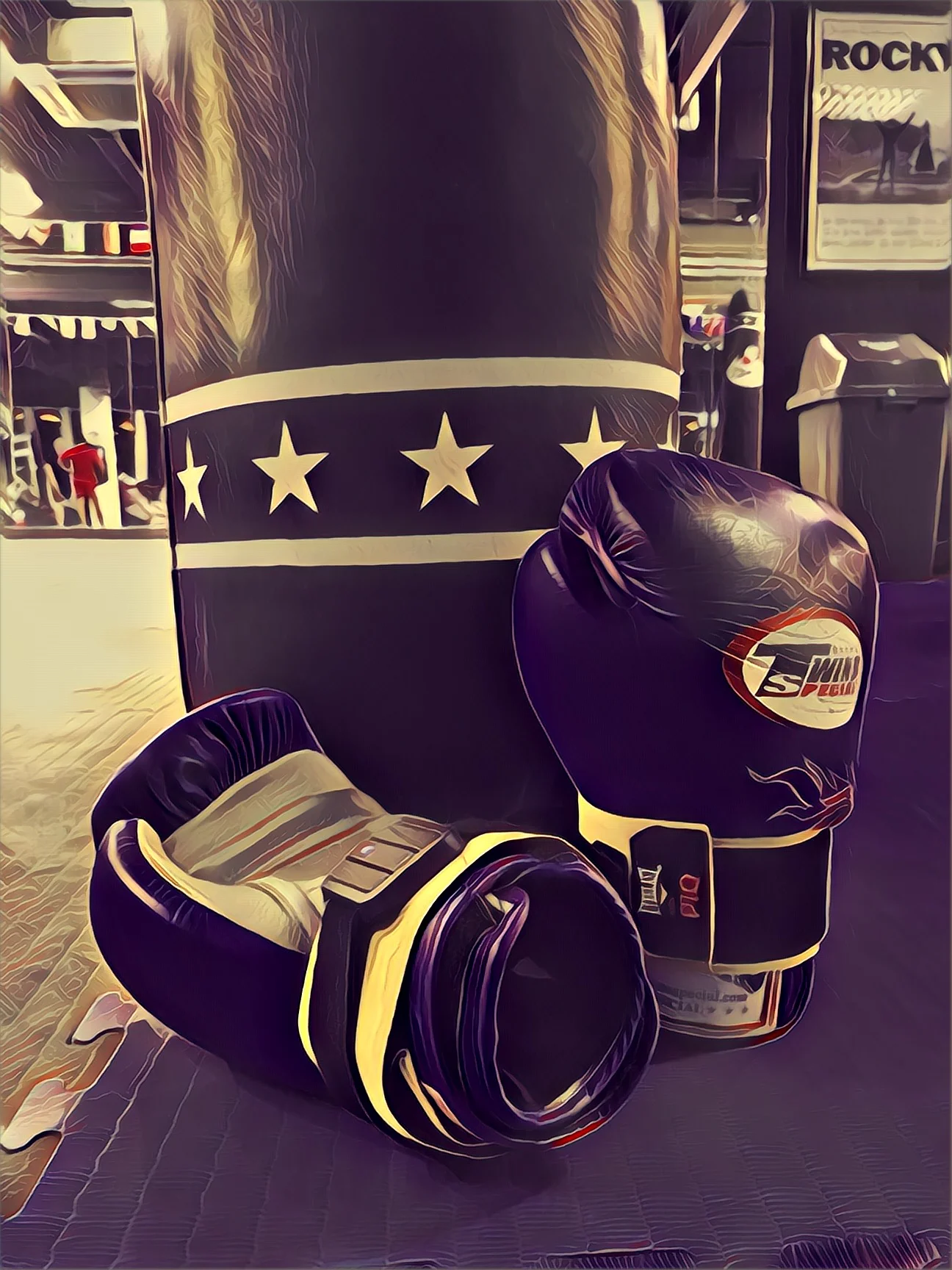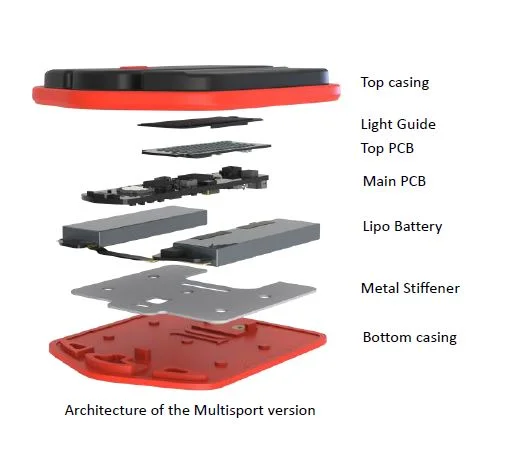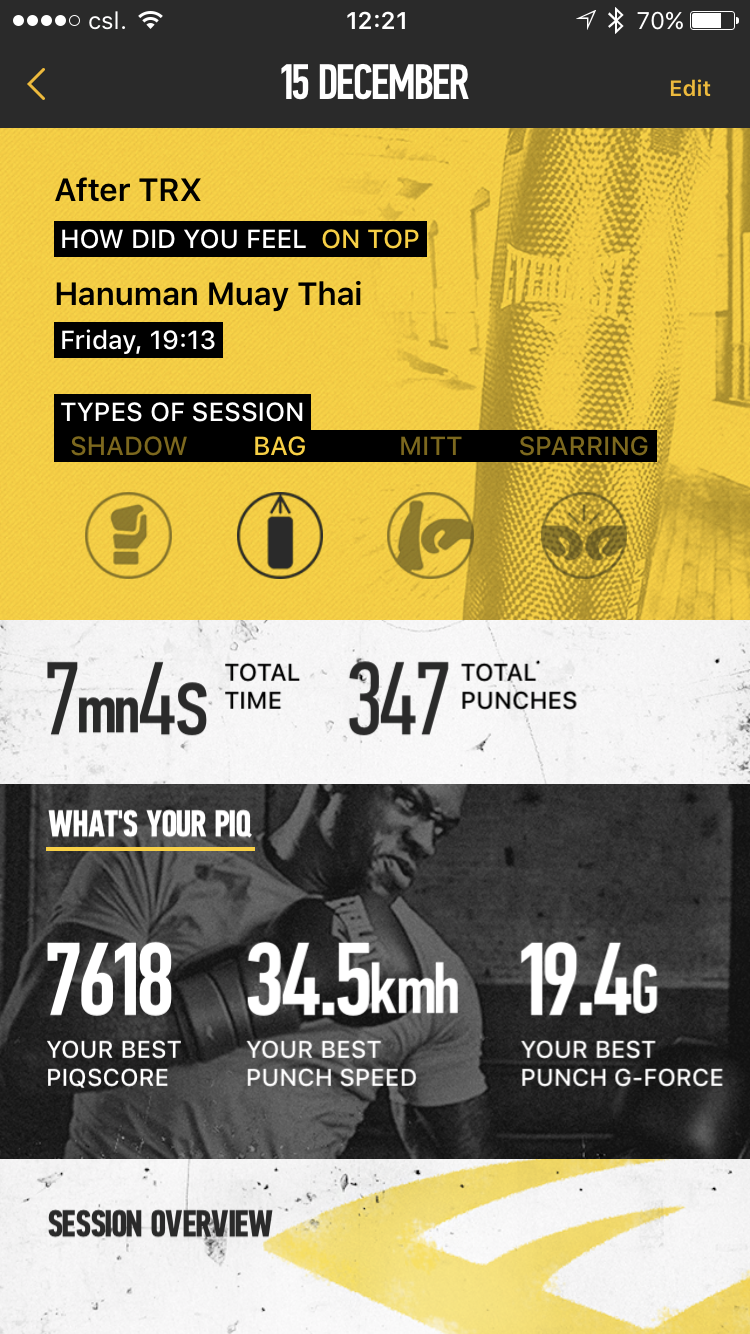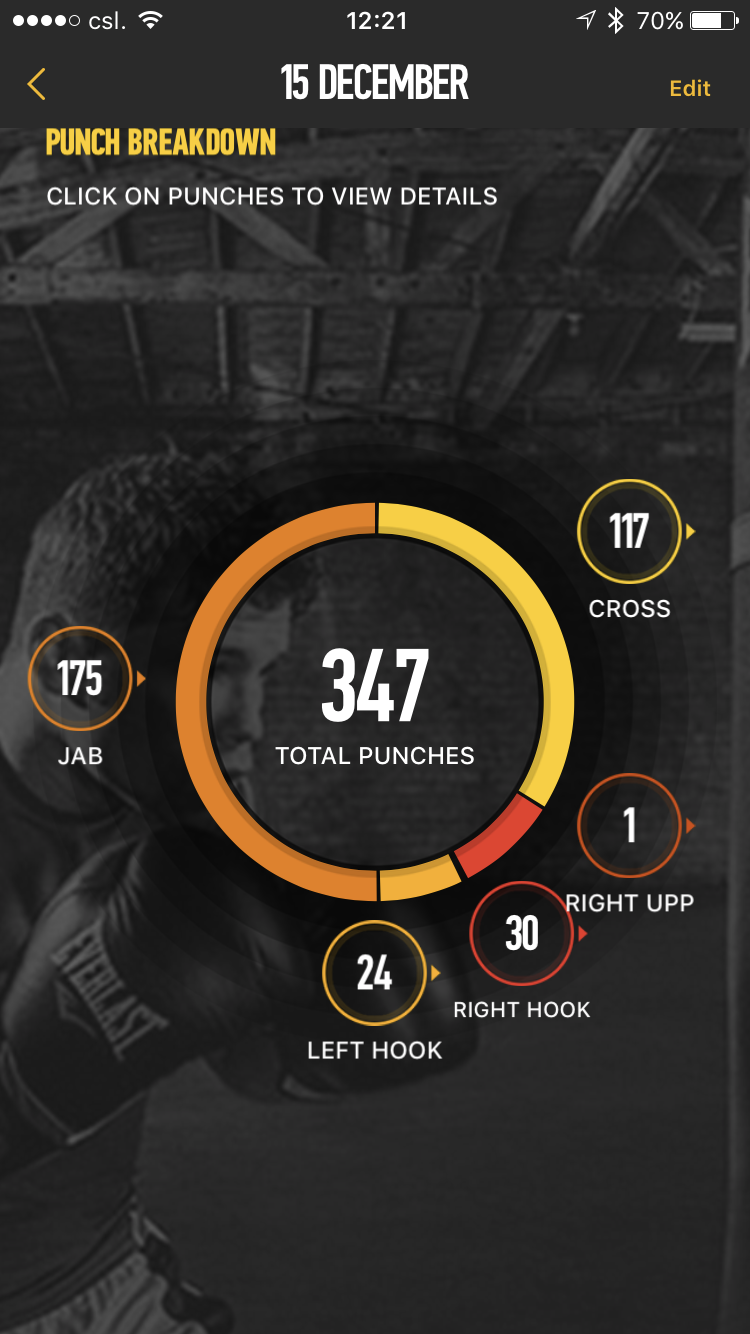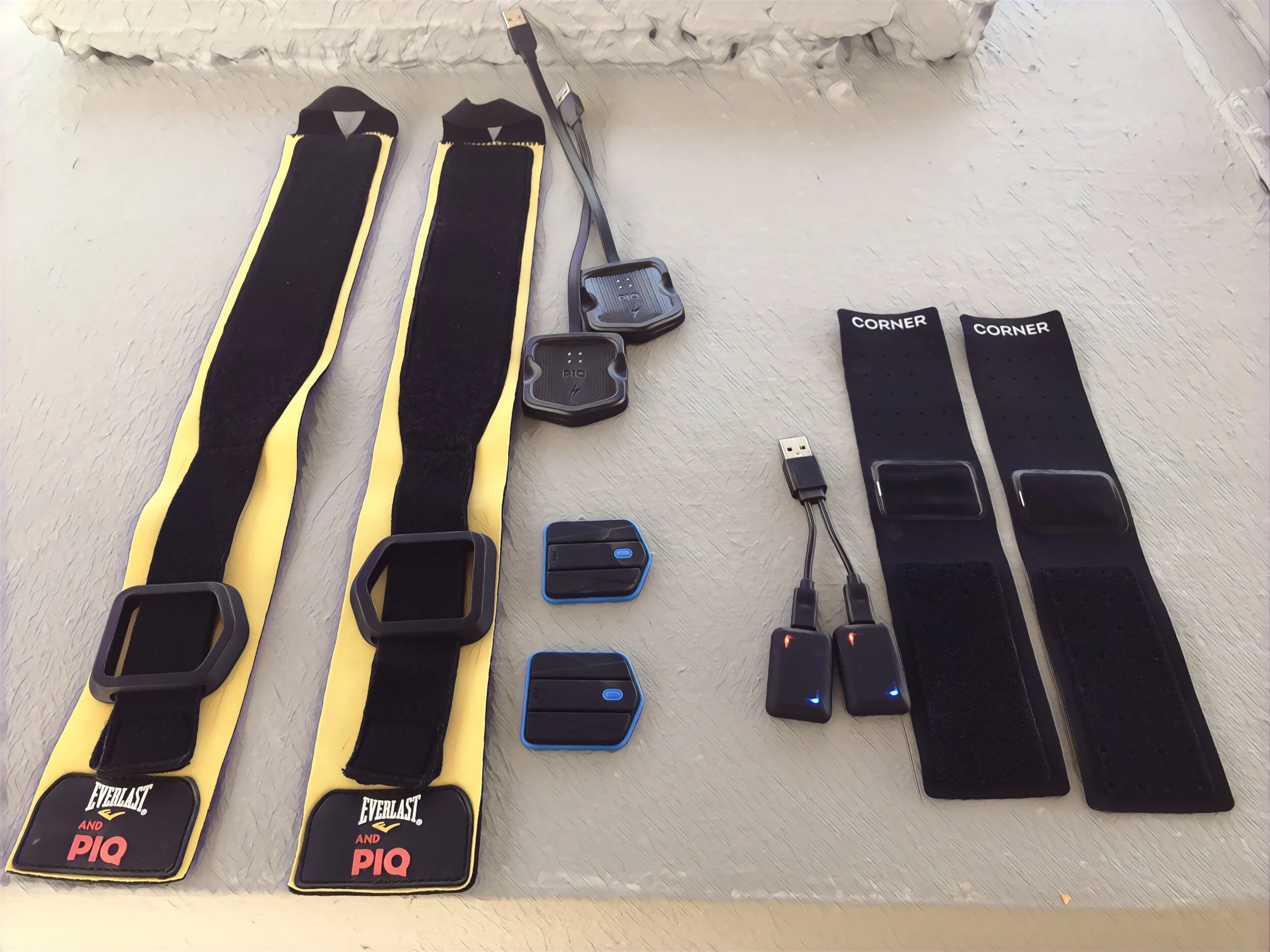My Data as a Coach - Training with the Everlast and PIQ Boxing Sensor
I came across the PIQ Blue Robot sensor in spring of this year, when I was browsing for some shirts and hoodies on the US website of iconic boxing brand Everlast. As the well-known Quantified Self (QS) nerd that I am, the idea of a sensor quantifying my pitiful boxing workouts was instantly intriguing. While I posted a snapshot of the PIQ on the Life-Sparring Facebook page, I did not end up buying the sensor, largely due to the serious commitment of US$ 99 per controller.
A bit more than half a year later, I received a surprising Facebook message from somebody working with PIQ Sports Intelligence, the company behind the PIQ sensor, offering me a free review sample. Obviously, I didn’t say no to that opportunity and about two weeks later I received two sensors, one for each hand.
Round One - Unboxing the Boxing Sensor
The first points PIQ scores right of the bell with a nice retail packaging. The co-branding with Everlast pays off, the box is a piece of art and motivation to start training.
Opened, the content of the packaging presents itself is very straightforward: a yellow-black velcro hand wrap with a silicon holder for the sensor on the left-hand side and the sensor itself in a USB charging cradle on the right-hand side of the box. Below that a few obligatory paper booklets in multiple languages with quick instructions and warnings, a set of small but very useful stickers to mark the sensors as left and right and that’s about it.
Round Two – Setting-up the App and Pairing the Sensors
I am an iPhone user, and the set-up is as easy as you would expect. The only surprise was, that creating an account required a mobile phone number and an SMS verification, something I would normally just expect from a messenger app.
The sensors paired via Bluetooth from within the APP, only one time during the extensive test period did I have issues to connect the sensors. The good thing is, that once paired PIQ remembers which sensor is used on your right and which on your left hand. Sticking the small l/r stickers on the bottom of the device makes it easy for you to identify which sensor is which, without having to use the LED-based self-identification sequence (if turned on, the right sensor flashes fast once pressed, the left-hand side sensor flashes in slower sequence).
After pairing the sensors, you are pretty much ready to go as there is not much to set-up in the app, other than deciding if you want to display the speed of your punches in km or miles per hour.
Round Three – Getting Technical
One of the most interesting aspects of PIQ’s product line-up is, that PIQ Sports Intelligence designed a sensor platform that can be applied to a huge array of sports. In addition to the blue Everlast & PIQ boxing sensor, that is the focus of this review, there are currently sensor kits for four other sports. Each of them co-branded with a leading equipment brand for that particular discipline. The partners are Mobitee for Golf, Babolat for Tennis, North for Kiteboarding and Rossignol for Skiing.
The blue colored PIQ for boxing is essentially a modified version of the red multisport sensor. While the kits for the other four sports feature the same sensor unit and only differ in their accessory (club tags for golf, a wristband for tennis…), the blue PIQ is a cheaper version that lacks a few of the sensor chips. Amongst others, does PIQ blue not have the NFC module, and features just a single LED instead of an LED display.
I assume that this was a move to reduce the retail price. To get any useful data on a boxing workout, two sensors, one for each hand, are essential and at US$ 149 retail for a single standalone red sensor, the sales price would have impacted the potential customer base significantly. After all, the average boxer surely runs on a tighter equipment budget than golfers or kite surfers. If you are not complementing your boxing with kite surfing or golf, you will not really miss the features left out. NFC is used in some other sports to recognize equipment (golf clubs) and the LED display would not be very useful in boxing anyway.
Currently, Everlast and PIQ sells for US$ 99 per unit, while the sets featuring the multi-sport unit are priced between US$ 178 (Tennis) and US$ 269 (Golf).
When it comes to the actual technology inside the sensor unit, PIQ’s website is a bit buzzword heavy and not terribly specific. We learn that “PIQ Robot is a powerful nano-computer and the software algorithm is driven by the revolutionary GAIA”.
PIQ Robot Hardware Architecture, copyright PIQ Sport Intelligence
I asked the PIQ team to share a few more details and they send me a PDF file with much more detailed specifications and an explosion diagram.
So just in case that you are interested: under the tiny blue hood of the PIQ Robot Blue hides a 3-axis 16bit sensor, with an accelerometer measuring +-200G, the main source of speed measurements. Also, there is a 9-axis sensor, featuring a +/- 16G accelerometer, a gyro (+/-2000 degree/s) and a magnetometer. This sensor unit likely provides the relevant data points to identify different types of punches.
The heart of the unit is an ARM M4 100 MHz processor with 512KB flash and 128 kb RAM. A 70 mAh LiPo battery powers the unit for about 8 hours of use, 8 MB of flash memory allow the unit to work independently from a mobile phone and a 2.4 GHz BLE unit transfers data from and to the phone via Bluetooth.
Round Four – Letting Your Hands Go: Boxing with Everlast and PIQ
During a boxing session, the Everlast and PIQ can be worn inside the glove, by wrapping the hand wrap with the sensor pocket on top of the regular hand wrap. Alternatively, the sensor can be wrapped outside of the glove. I recommend the first method, as even with velcro gloves it is almost impossible to put gloves and sensor on without help. Wearing the sensor inside of the glove also seemed to offer more stability. The downside is obviously, that is difficult to check if the LEDs are still solid green and the sensors are recording. However, I did not have any issues with accidentally pressing the activation button.
If worn on the wrist inside the gloves I also do not see much of a risk wearing the sensor during a light sparring session. I would, however, recommend asking any opponent for his/her consent to avoid any potential conflict.
The Everlast and PIQ system essentially has two different modes of use. You can record a free session and analyze it later or you can conduct a drill exercise, which is broadcasted live to your phone in Bluetooth range.
Recording a session is as simple as it gets. You turn the sensors on and pair them to the phone, strap on the sensor and conduct your workout. Once you are finished, get close to your phone and upload the data to the app. You can then add some information, name the session and save it. You can use this function for all types of training, bag work, pad work, shadow boxing or sparring.
The live drill works differently. You program the round timer by deciding how many rounds you want to do and by defining round time and rest between rounds. Once you fire the first punch, the round timer starts, and the display shows you in real time the remaining time in the round, the number of punches for the round, the average speed, average g-force and the date for the last punch. If you turn the sound of your phone to the max, there is a nice ring bell, indicating beginning and end of each round. I used the drill primarily for heavy bag sessions, where I placed the phone on the floor behind the bag, to be able to occasional glance at the display seeing time and the punch count.
Round Five – Numbers Seldom Lie (While Boxing Judges Occasionally do)
With all its sensors, Everlast and PIQ can recognize and count the different punches you throw fairly accurate. After each session, you get a nice breakdown of the total punches and how many of them were jabs, crosses, right uppercuts or devastating left hooks.
Winning Factors - PIQ's key insights from your boxing workout.
For every single punch, PIQ measures the G-Force at the impact, as a proxy for the power of your punch, the speed of the punch, and the retraction time of your hand in milliseconds.
On top of the pure breakdown of punches, PIQ also tries to provide insights on your strengths aka “Winning Factors” and your weaknesses (things to watch). For Winning Factors also punch combinations are taken into account.
As I am not training boxing, but Muay Thai, traditional Thai Kickboxing, the data from a typical Muay Thai Session does not provide too many useful insights.
A usual ringside class in my gym last 75 minutes and includes a warm-up, shadow boxing, bag work, pad work 3-4 rounds of light sparring, a kick-drill and a short cool-down. As we switch quite seamlessly between the different types of training, it is difficult for me to upload the different types of training as separate sessions. This, however, would be necessary to get meaningful data. Comparing sessions that include bag work, pad work and sparring in varying proportions with each other is not really helpful.
A session overview on Everlast and PIQ
Also during Muay Thai bag and pad rounds, the elbows thrown pose a challenge to the sensor and in general the sessions show a low intensity, as the app obviously does not care for the additional work done with knees and kicks.
For me personally, the drill mode is the money shot of Everlast and PIQ. Being able to quantify my output during bag work has been a huge motivator. I always struggled with motivation when it came to bag drills all by myself. With Everlast and PIQ just being able to see the total number of punches thrown in a round, is already a game changer. Now I usually set myself a target for a minimum of punches per round, for example, 50 per minute. Suddenly you realize how difficult it is to keep up a steady pace, and how your G-force drops from one round to the other unless you make a conscious effort to keep up the intensity.
The data provided by the app enables me to target specific styles of punches or to focus on specific areas like power, speed or frequency and get immediate feedback if there is a positive change.
Punch breakdown - a bit stingy with the right uppers, are we?
For a boxing talent with professional ambitions, an experienced trainer might provide similar feedback, but for an amateur like me, training mostly in group sessions, this is a completely new dimension of feedback.
Everlast and PIQ added an interesting additional layer to my boxing experience and really motivated me to work on the different elements of my technique. While still being far off from the speed and power of the leaderboard champions, I increased speed and G-force significantly from my first workout.
As a Quantified Self Nerd, the only thing I miss from Everlast and PIQ is an opportunity to export my data into a CSV file. Within the app, it is difficult to plot progress over time or to compare several sessions at once.
If you are less interested in the detailed breakdown of your punches and you rather want to have a single metric to judge your workout, PIQ provides you with the PIQscore, an aggregation of the three factors Speed, G-Force impact, and retraction.
Round Six – Reach for Glory: Leaderboards and an Active Community
People are driven by very different motivators and if gamification is what keeps you going, Everlast and PIQ offer several ways to compare your scores with a growing community of users.
Built into the App is a leaderboard, where you can either measure yourself against friends whom you manually added or with the international leaderboard of all users. The leaderboard covers all three categories, speed, G-force, and retraction, with subcategories for all different punches as well as 2 and 3-punch combos. If you want to know how you fare compared to the undisputed “Chill Master” or other Everlast and PIQ greats, the leaderboard is your place to go. Apparently, my best showing on the all-time leaderboard is the 129th place in G-force for my cross.
If the static leaderboard is not enough, there the additional free app called “League of Friends”, that enables you to challenge friends and built your own community around using PIQ robot across the different sports you are participating in. If you have a whole bunch of friends who own a PIQ, you can set up your own league, challenge each other and even ask third parties to determine a winner to a contest.
If you do not have friends using PIQ or you want to make new friends sharing your passion for hitting hard, you can head over to the Everlast and PIQ Facebook group.
The Verdict: Not a KO but a Clear Victory by Decision for Everlast and PIQ
The Everlast and PIQ boxing sensor system is a solid product, especially if compared to the quantified self wearables launched on Kickstarter. The hardware as well as the app work smooth and provide solid and useful data and interesting insights. It really shows, that the complete PIQ team has solid experience in consumer electronics (the core of the team previously worked for mobile phone giant HTC).
While gamification (PIQ score) is a big part of it, the app, strikes a nice balance between being able to drill down into real data and getting a point score to compare with your friends. The only thing missing from a quantified self perspective is the option to export the data as a CSV file for further analysis and other forms of visualization.
With the relatively high price (US$ 198) for two sensors, Everlast and PIQ does not deliver a KO, but scores a very solid win by majority decision. If you are passionate about boxing and have a bit money to spare, if you are motivated by comparing yourself to other boxers or just want to get a clear indication on how to improve your boxing, you likely will love the PIQ robot blue.

